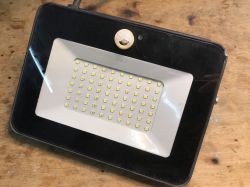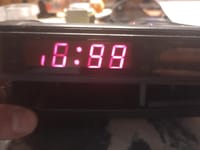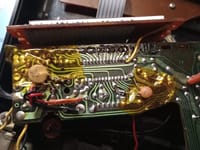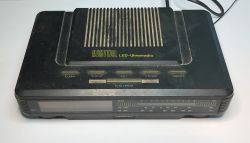 .
.
I would like to invite you to a presentation of the interior of an older Crown Japan radio alarm clock model CR-S9028, designated DIGITAL LED-Uhrenradio. The unit offers FM reception in the 88-108 MHz range and AM reception in the 540-1600 kHz range. It is equipped with an LED display showing the current time, an alarm clock function with snooze option, and battery back-up of the clock in case of mains power failure.

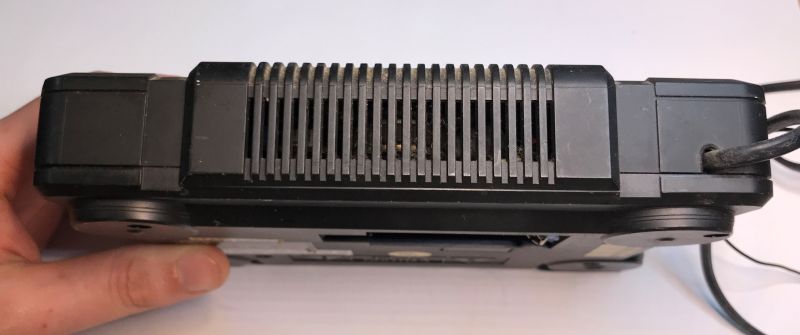 .
.
The inscriptions on the housing are in German. Uhrenradio, as you might guess, is a radio alarm clock. Schlummer is a snooze (postponement of the alarm). Zeit is the time, Stunde is the hour, Schlaf is sleep (this is probably the radio automatically switching off after a set time).
At the bottom is a space for a 9V battery, just for backup:
 .
.
Let's take a look inside. The laminate inside is single sided and single layer. The assembly is fully threaded. The radio relies on a ferrite antenna and an adjustable capacitor and on coils protected with paraffin so as to prevent the coils from physically moving relative to each other.
 .
.
The first thing we see is the display and alarm clock controller - the LM8560. About it in a moment. First, let's turn our attention to the power supply section - there is no switching power supply here, just a simple transformer. Heavier, but simpler to build.
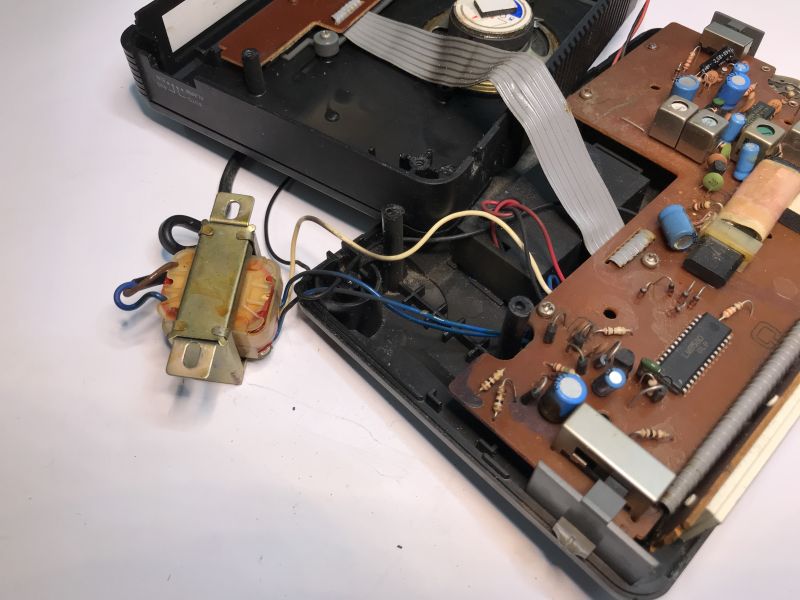 .
.
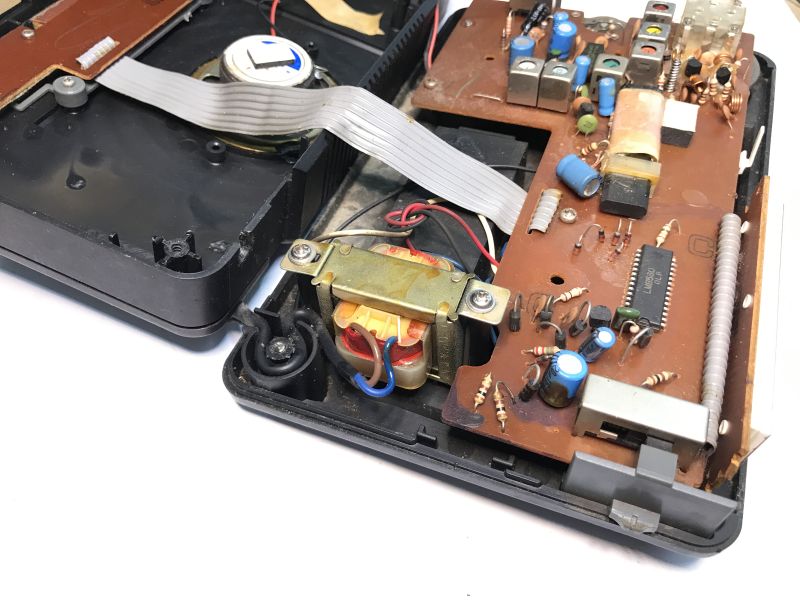 .
.
Now the underside of the PCB. It's been a long time since I've seen paths routed like this, is it handmade? Modern CAD programs don't run tracks like this. Here you can also see that the LM8560 directly controls the display.
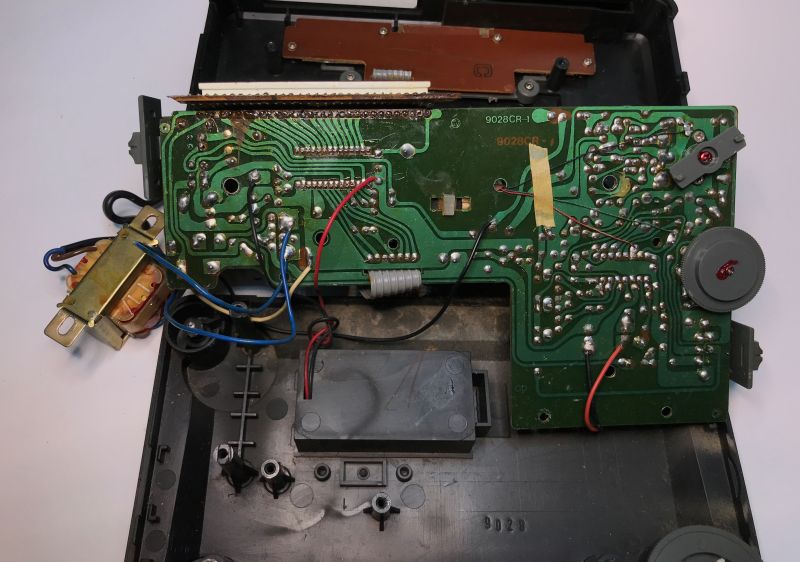 .
.
The radio itself is based on the TA7613AP:
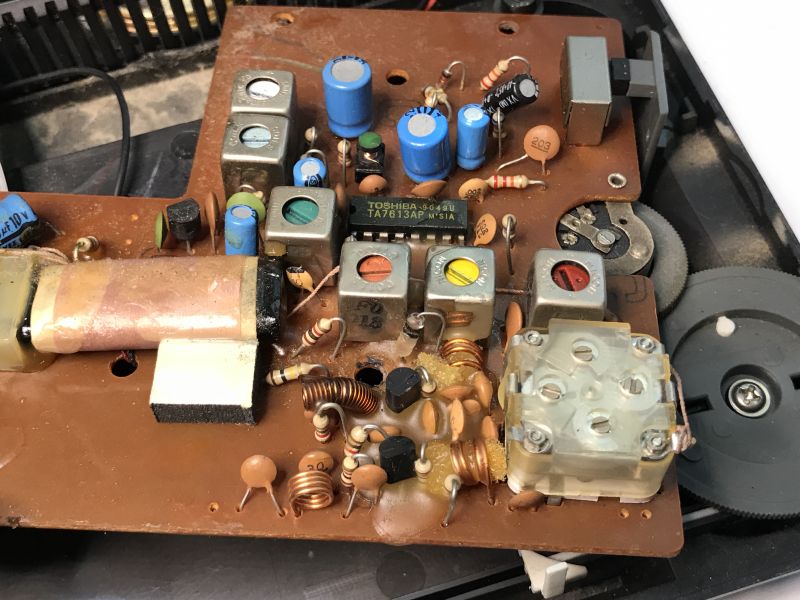 .
.
Basically that's it, the button board has no more electronics.
 .
.
All that remains is the speaker:
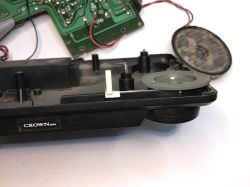
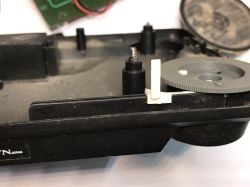
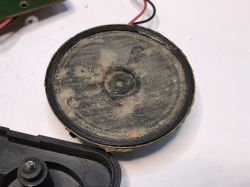 .
.
Now it is time to look at the principle of operation. Here we have two circuits:
- LM8560 - a digital clock controller with built-in alarm, display, pushbutton operation and clocking from the mains via 50 or 60Hz
- TA7613AP - a single-chip AM/FM radio controller, including AM amplifier, oscillator, mixer, etc.
Don't confuse the LM8560 with a microcontroller - this chip was designed directly for alarm clocks:
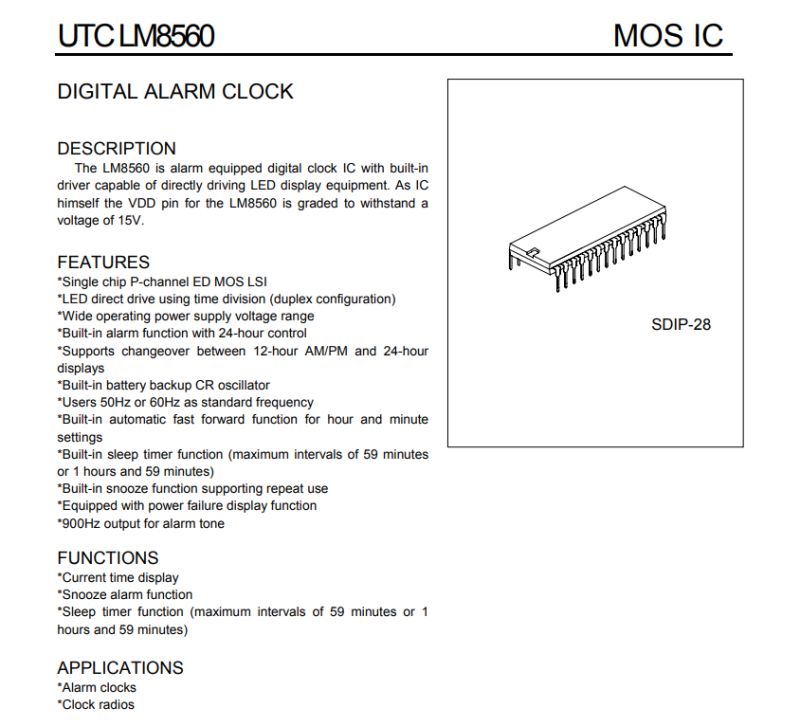 .
.
Pinouts:
 .
.
The internal design shows the pulse counting route well. We have two inputs - CR (oscillator) and 50/60Hz (from the transformer). These go to a gate which decides which pulses are counted. Then there is a divider for 50 or 60Hz (1/25 or 1/30) and then a divider in half so that we get 1Hz. This is then processed by the blocks from counting time, alarm and snooze...:
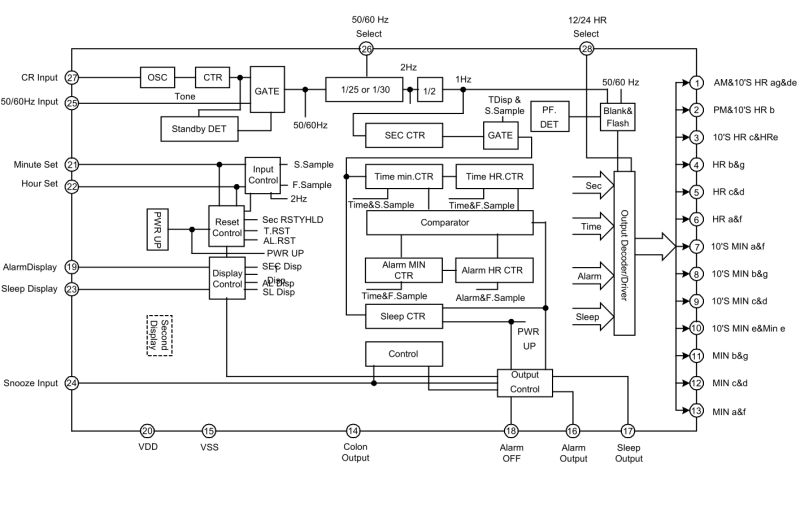 .
.
The LED multiplexing is solved in an interesting way. The display is with a common cathode, but the LM8560 only controls the segments. The common cathodes are controlled from... transformer, from the respective halves of the sine wave. The obvious consequence of this is that the display does not work when the whole thing is powered by battery only. Moreover, these common cathodes are two - and 14 segments each.
 .
.
193650bb6 .
The schematics illustrate well how the clock is clocked from the mains, this is done by connecting from the transformer before the rectifying diode to the 50/60 Hz Input pin. Right next to it you can see the battery backup and the oscillator with resistor and capacitor (CR Input pin). The alarm output can switch the radio or buzzer.
This leaves the TA7613AP. As I've written before, it's basically a single chip AM/FM radio controller:
 .
.
 .
.
You don't even need an LM386 - there's already a Class B audio amplifier inside.
Summing up , there were essentially two separate sections inside - one was the simplest single-chip radio, all integrated into the TA7613AP, and the other was an IC designed for an alarm clock with a mains frequency-based countdown along with optional sustain on an RC resonator. I think I was most interested in this display multiplexed by that 50/60Hz from the mains.
Simple and functional, although I wonder what the stability of the mains frequency was like in the heyday of such products and whether the deviation of the time display grew rapidly.
Have you used this type of alarm clock, or do you still use one? My alarm clock in my primary school days was already a bit more technological, as it had an LCD....
Cool? Ranking DIY Helpful post? Buy me a coffee.





